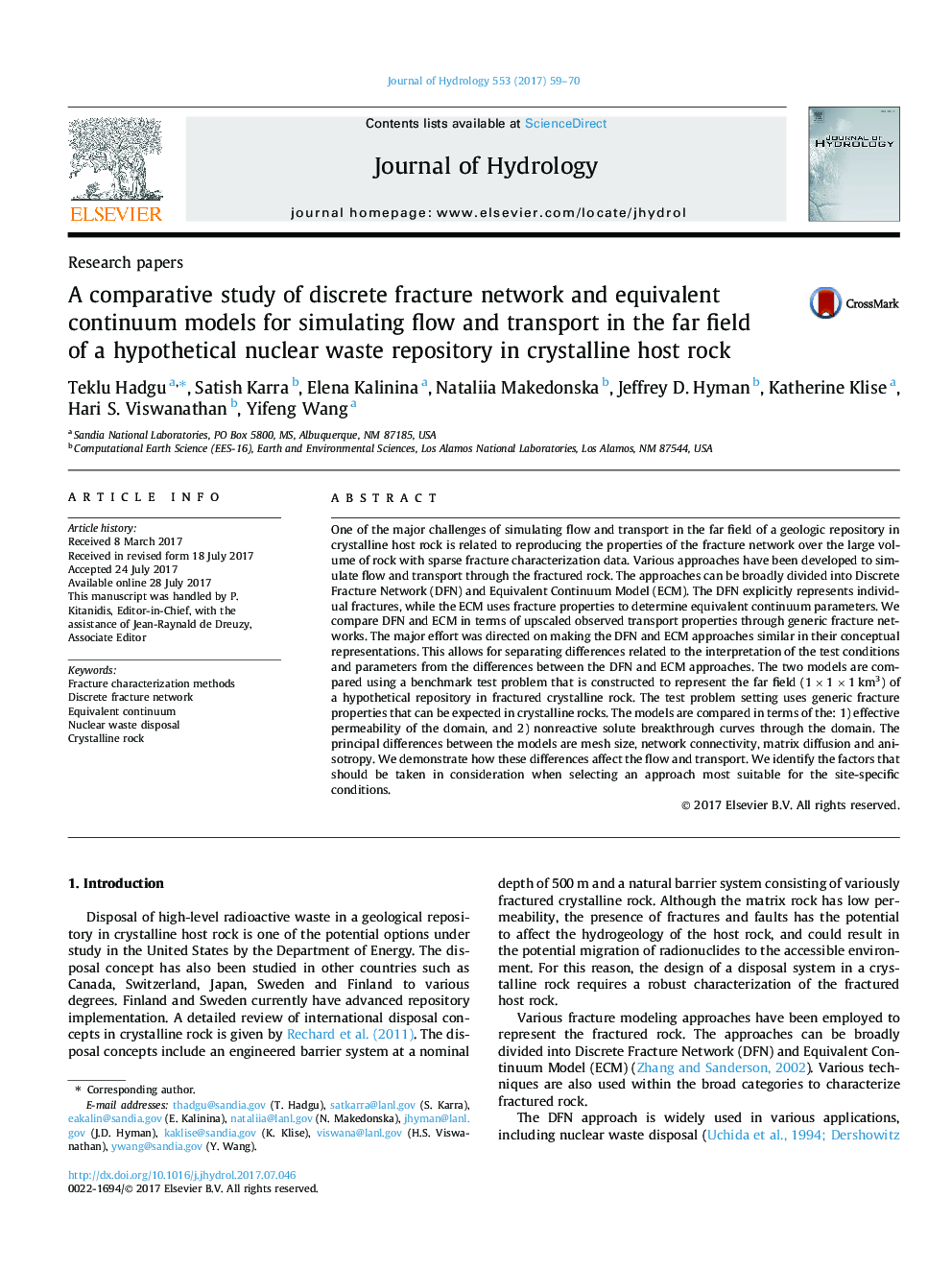| کد مقاله | کد نشریه | سال انتشار | مقاله انگلیسی | نسخه تمام متن |
|---|---|---|---|---|
| 5770801 | 1629901 | 2017 | 12 صفحه PDF | دانلود رایگان |
- Comparison of two fracture modeling methods for flow and transport in crystalline rock.
- Discrete fracture network and equivalent continuum models are compared.
- A benchmark test problem that represents a hypothetical repository in crystalline rock is used.
- Results show that both methods can be used to model the far field of a repository in crystalline rock.
- Main differences are discretization, connectivity, matrix diffusion and anisotropy.
One of the major challenges of simulating flow and transport in the far field of a geologic repository in crystalline host rock is related to reproducing the properties of the fracture network over the large volume of rock with sparse fracture characterization data. Various approaches have been developed to simulate flow and transport through the fractured rock. The approaches can be broadly divided into Discrete Fracture Network (DFN) and Equivalent Continuum Model (ECM). The DFN explicitly represents individual fractures, while the ECM uses fracture properties to determine equivalent continuum parameters. We compare DFN and ECM in terms of upscaled observed transport properties through generic fracture networks. The major effort was directed on making the DFN and ECM approaches similar in their conceptual representations. This allows for separating differences related to the interpretation of the test conditions and parameters from the differences between the DFN and ECM approaches. The two models are compared using a benchmark test problem that is constructed to represent the far field (1Â ÃÂ 1Â ÃÂ 1Â km3) of a hypothetical repository in fractured crystalline rock. The test problem setting uses generic fracture properties that can be expected in crystalline rocks. The models are compared in terms of the: 1) effective permeability of the domain, and 2) nonreactive solute breakthrough curves through the domain. The principal differences between the models are mesh size, network connectivity, matrix diffusion and anisotropy. We demonstrate how these differences affect the flow and transport. We identify the factors that should be taken in consideration when selecting an approach most suitable for the site-specific conditions.
Journal: Journal of Hydrology - Volume 553, October 2017, Pages 59-70
